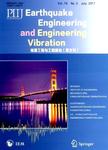Structural vibration passive control and economic analysis of a high-rise building in Beijing
Structural vibration passive control and economic analysis of a high-rise building in Beijing作者机构:Beijing Qitai Shock Control and Scientific Development Co. Ltd Beijing 10003 7 China John A. Martin & Associates Inc. Los Angeles USA
出 版 物:《Earthquake Engineering and Engineering Vibration》 (地震工程与工程振动(英文刊))
年 卷 期:2009年第8卷第4期
页 面:561-568页
核心收录:
学科分类:08[工学] 0818[工学-地质资源与地质工程] 081402[工学-结构工程] 0815[工学-水利工程] 081304[工学-建筑技术科学] 0813[工学-建筑学] 0802[工学-机械工程] 0814[工学-土木工程] 0801[工学-力学(可授工学、理学学位)]
主 题:fluid viscous dampers (FVD) damping ratio secondary system One-time investment maintenance factor
摘 要:Performance analysis of the Pangu Plaza under earthquake and wind loads is described in this paper. The plaza is a 39-story steel high-rise building, 191 m high, located in Beijing close to the 2008 Olympic main stadium. It has both fluid viscous dampers (FVDs) and buckling restrained braces or unbonded brace (BRB or UBB) installed. A repeated iteration procedure in its design and analysis was adopted for optimization. Results from the seismic response analysis in the horizontal and vertical directions show that the FVDs are highly effective in reducing the response of both the main structure and the secondary system. A comparative analysis of structural seismic performance and economic impact was conducted using traditional methods, i.e., increased size of steel columns and beams and/or use of an increased number of seismic braces versus using FVD. Both the structural response and economic analysis show that using FVD to absorb seismic energy not only satisfies the Chinese seismic design code for a "rare" earthquake, but is also the most economical way to improve seismic performance both for one-time direct investment and long term maintenance.



